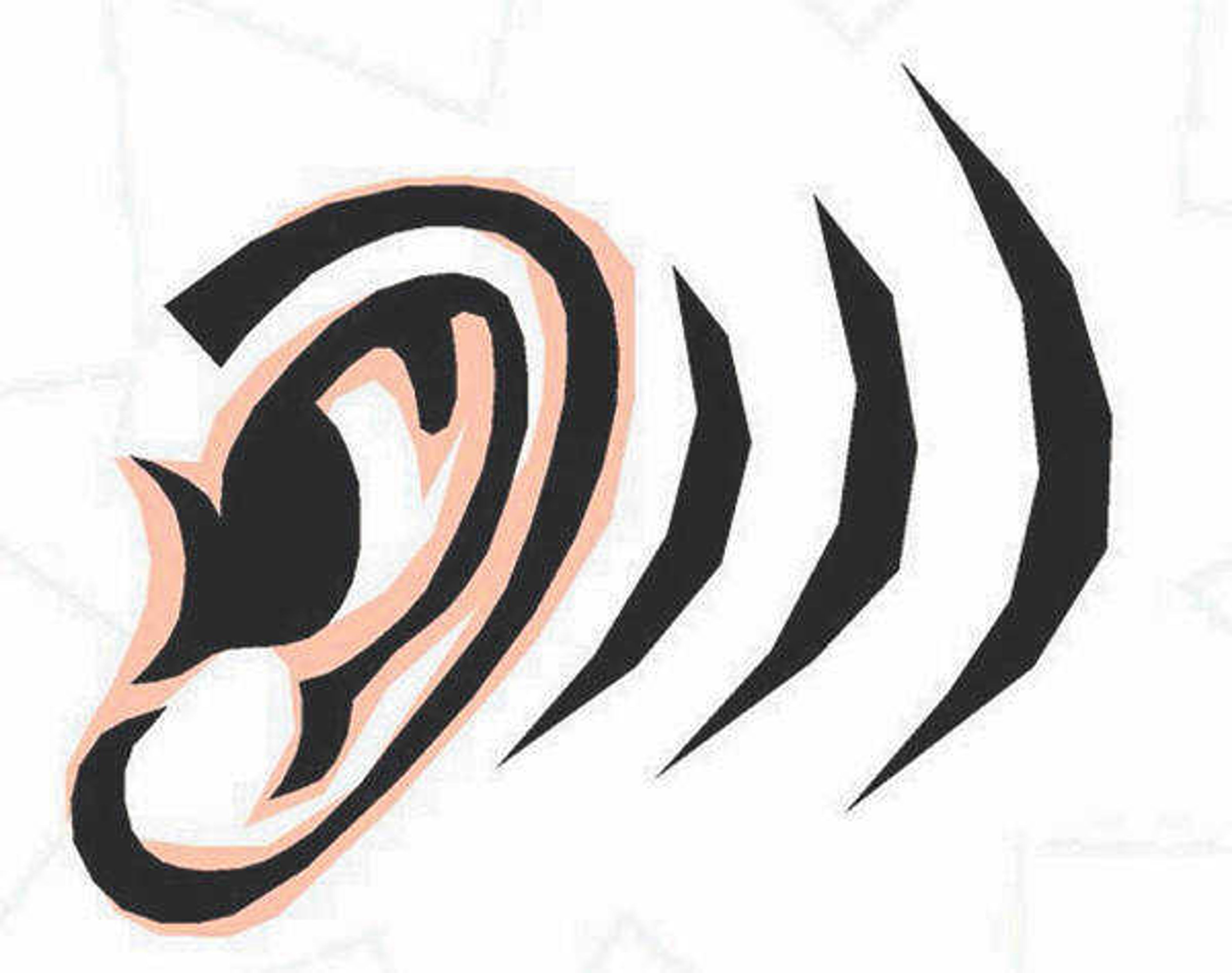Music therapy eases chronic hearing ailment
It's hard to imagine that soft noise can ease symptoms caused by loud noises. Tinnitus can be pronounced and heard in different ways, but it boils down to a ringing in the ears. It results from repetitive exposure to loud noises -- chainsaws, loud concerts or even factory work. It can also be caused by a sudden loud sound like a firecracker or explosion...
It's hard to imagine that soft noise can ease symptoms caused by loud noises.
Tinnitus can be pronounced and heard in different ways, but it boils down to a ringing in the ears. It results from repetitive exposure to loud noises -- chainsaws, loud concerts or even factory work. It can also be caused by a sudden loud sound like a firecracker or explosion.
"It's usually over time," said Dr. Linda Hurt, an audiologist with Audiology Associates Inc. in Cape Girardeau. "People report that it sounds like crickets."
Hurt said there is no cure and treatments are few and far between, but one Pennsylvania-based company is trying to get people to hear their method.
At first, Bill Guhl was skeptical about using music therapy to manage hearing problems such as tinnitus, a progressively worsening condition he developed after serving in noisy Vietnam War battlefields.
Four months into the tinnitus treatment, though, the Weston, Ohio, man said his hearing has improved by about 60 percent.
Hearing loud noises, which used to cause pain to shoot down into his shoulder, no longer hurts, Guhl said.
"Taking the pain out of this whole thing has really helped," said Guhl, who for the first time in years can go to restaurants and social gatherings without wearing earplugs.
Guhl is one of 32 tinnitus patients at Northwest Ohio Hearing Clinic who are being treated with an FDA-approved medical device developed by Neuromonics Inc. of Bethlehem, Pa.
All of the patients are progressing except one, said Randa Mansour-Shousher, doctor of audiology at the private clinic, which has locations at the University of Toledo Medical Center, the former Medical College of Ohio Hospital, and in Perrysburg, Ohio.
About 12 million Americans have chronic tinnitus, a debilitating condition often described as ringing in the ears, and up to 2 million are unable to work or leave home, according to the American Tinnitus Association.
There is no cure for tinnitus.
The Neuromonics device, however, shows promise for helping some patients and is unusual both because it uses music and takes less time than other sound therapies, said Jennifer DuPriest, spokeswoman for the association.
"Sound therapies ... are the most effective form of treatments to date," she said.
Research shows the customized Neuromonics treatment helps 91 percent of patients significantly reduce tinnitus symptoms, according to the company. Most of their business has been in Australia.
After patients are evaluated, they are given devices that look like MP3 players. The devices deliver auditory stimulation at high frequencies and keep track of usage information to help evaluate and customize treatments.
The two-phase Neuromonics treatment typically takes about six months, and patients may continue using the devices during periodic tinnitus disturbances, Mansour-Shousher said.
During the treatment's second phase, which Guhl is in, patients' brains are retrained to ignore the sounds, she said.
Patients, though, must be devoted to following the treatment program, Mansour-Shousher said.
That includes using the device for at least two to three hours a day when noises are most disturbing during the first couple of months, she said.
"It's not an easy thing to deal with," Mansour-Shousher said. "You can't just put this on and then it's done."
Guhl, who hears a sound similar to locusts, especially in his right ear, said he tried other tinnitus treatments to no avail and was depressed.
The Neuromonics treatment will not cure his condition, but he is grateful for the improvement, he said.
Hurt said she had heard of the treatment, but was slow to jump on the wagon.
"There have been so many things in the past that we have thought, 'Oh, this is going to work, this is it, and it hasn't worked,'" Hurt said.
She wants to give Neuromonics more time to prove itself.
Southeast Missourian staff writer Chris Harris contributed to this report.
Connect with the Southeast Missourian Newsroom:
For corrections to this story or other insights for the editor, click here. To submit a letter to the editor, click here. To learn about the Southeast Missourian’s AI Policy, click here.










